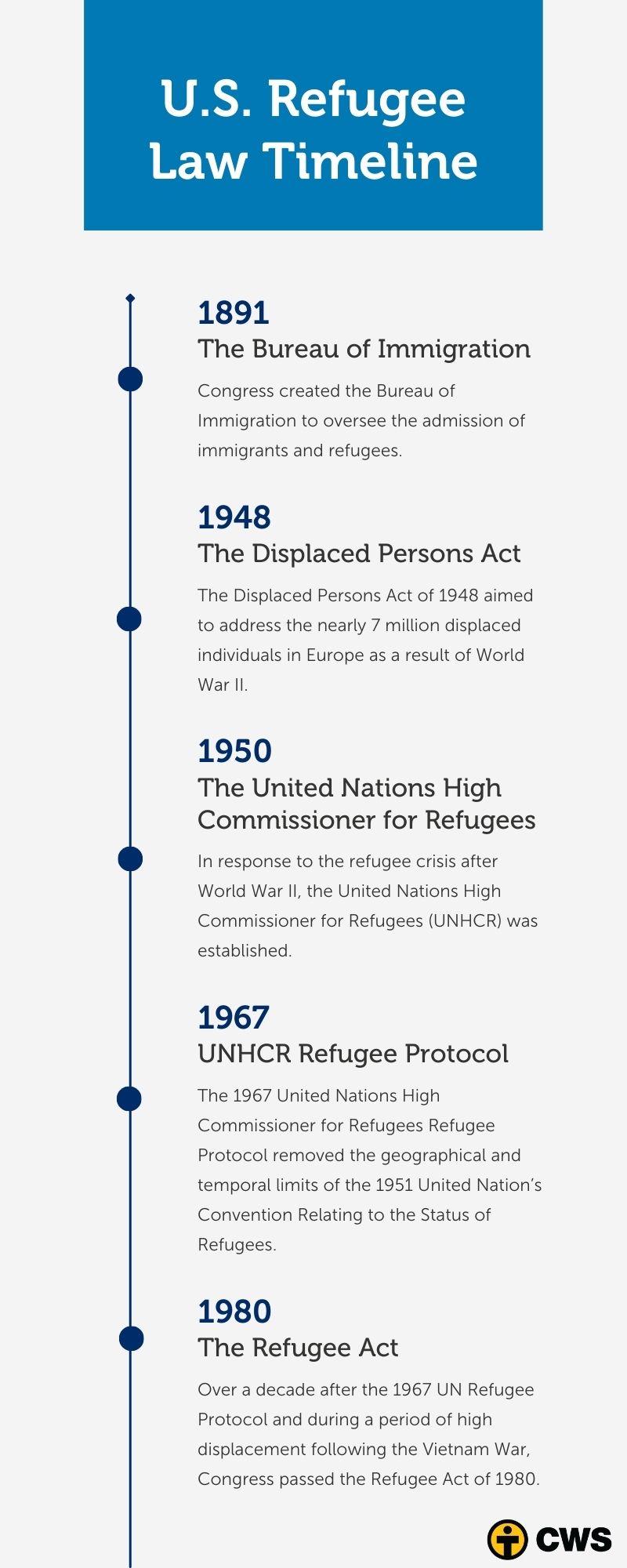Today, March 17, 2025, marks the 45th anniversary of the Refugee Act of 1980, a landmark piece of legislation that solidified the United States’ leadership in refugee protection. For decades, this legislation has upheld our nation’s commitment to welcoming those in need, providing a vital pathway to safety for the world’s most vulnerable.
However, recent executive orders from the Trump Administration have placed this legacy at risk. In a devastating first, February 2025 became the only month since the Refugee Act’s passage that the United States did not welcome a single refugee newcomer.
As we reflect on today’s anniversary, learn more about the Refugee Act, the United States’ long-standing leadership in resettlement and how you can take action to support refugees today.
The Refugee Act of 1980 Explained
What is the Refugee Act? On March 17, 1980, President Jimmy Carter signed into law the Refugee Act, a landmark piece of legislation that established the U.S. refugee resettlement program and asylum system.
Why is the Refugee Act important? The Refugee Act of 1980 strengthened the U.S. commitment to refugee protection by creating the Office of Refugee Resettlement, expanding annual admissions and aligning the definition of “refugee” with United Nations standards as someone with a “well-founded fear of persecution.” This landmark legislation provided a more accessible path to safety for those seeking refuge.
What is the current state of the U.S. resettlement program? Since its passage, the Refugee Act of 1980 has upheld the United States’ role as a global leader in refugee protection—a legacy we must continue to defend. However, a recent Executive Order from the Trump Administration indefinitely suspended the U.S. Refugee Admissions Program, stranding thousands of refugees without a path to safety. In a heartbreaking first, February 2025 marked the only month since the Act’s enactment that the U.S. welcomed no refugees.
Timeline of U.S. Refugee Laws
- 1891: The Bureau of Immigration is Established
- Congress created the Bureau of Immigration to oversee the admission of immigrants and refugees. At the time, no separate laws existed for refugee admissions, and refugees could resettle in the United States as long as they met the requirements for immigrant admissions.
- 1948: The Displaced Persons Act
- In the first specific refugee act passed by Congress, the Displaced Persons Act of 1948 aimed to address the nearly 7 million displaced individuals in Europe as a result of World War II. Under the Act, the United States admitted more than 350,000 displaced persons before it expired in 1952.
- 1950: The United Nations High Commissioner for Refugees is Established
- In response to the refugee crisis after World War II, the United Nations High Commissioner for Refugees (UNHCR) was established. UNHCR acts as a guardian of the 1951 Convention Relating to the Status of Refugees, which defines the legal protections for refugees, and plays a key role in refugee admissions by identifying the most vulnerable individuals for resettlement to a safe country, like the United States.
- 1967: UNHCR Refugee Protocol
- The 1967 United Nations High Commissioner for Refugees Refugee Protocol removed the geographical and temporal limits of the 1951 United Nation’s Convention Relating to the Status of Refugees. This allowed the Convention to be used universally. The U.S. signed the 1967 Protocol on Nov. 1, 1968. The Protocol was the only amendment to the Convention.
- 1980: The Refugee Act
- Over a decade after the 1967 UN Refugee Protocol and during a period of high displacement following the Vietnam War, Congress passed the Refugee Act of 1980. The Act created a uniform and comprehensive policy to proactively address refugee admissions by removing previous geographic and ideological limits on those who qualify, increased the number of refugees who could be admitted annually and created the Office of Refugee Resettlement to oversee resettlement programs. The Refugee Act of 1980 established a more accessible path to welcoming for our neighbors seeking safety. Under the Act, the president, in consultation with Congress, sets the annual number of refugee admissions.
How You Can Support Refugees
The Trump administration’s indefinite refugee ban has had a devastating impact on tens of thousands of refugee families and communities across the country. Church World Service will continue to serve those in our care using all the resources we have at our disposal, and we urge you to stay with us in this time of great need. Please consider donating to support our most vulnerable neighbors.
Want the most up-to-date information? Subscribe to our Daily State of Play newsletter to receive daily updates on the latest developments and ways to support impacted communities.

